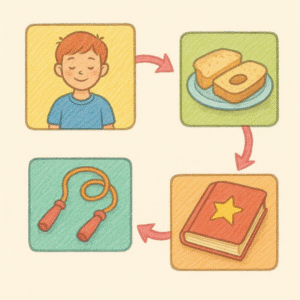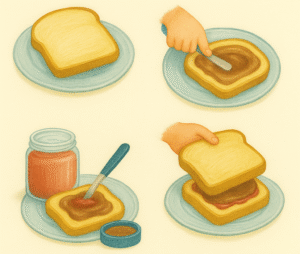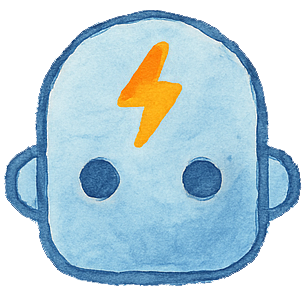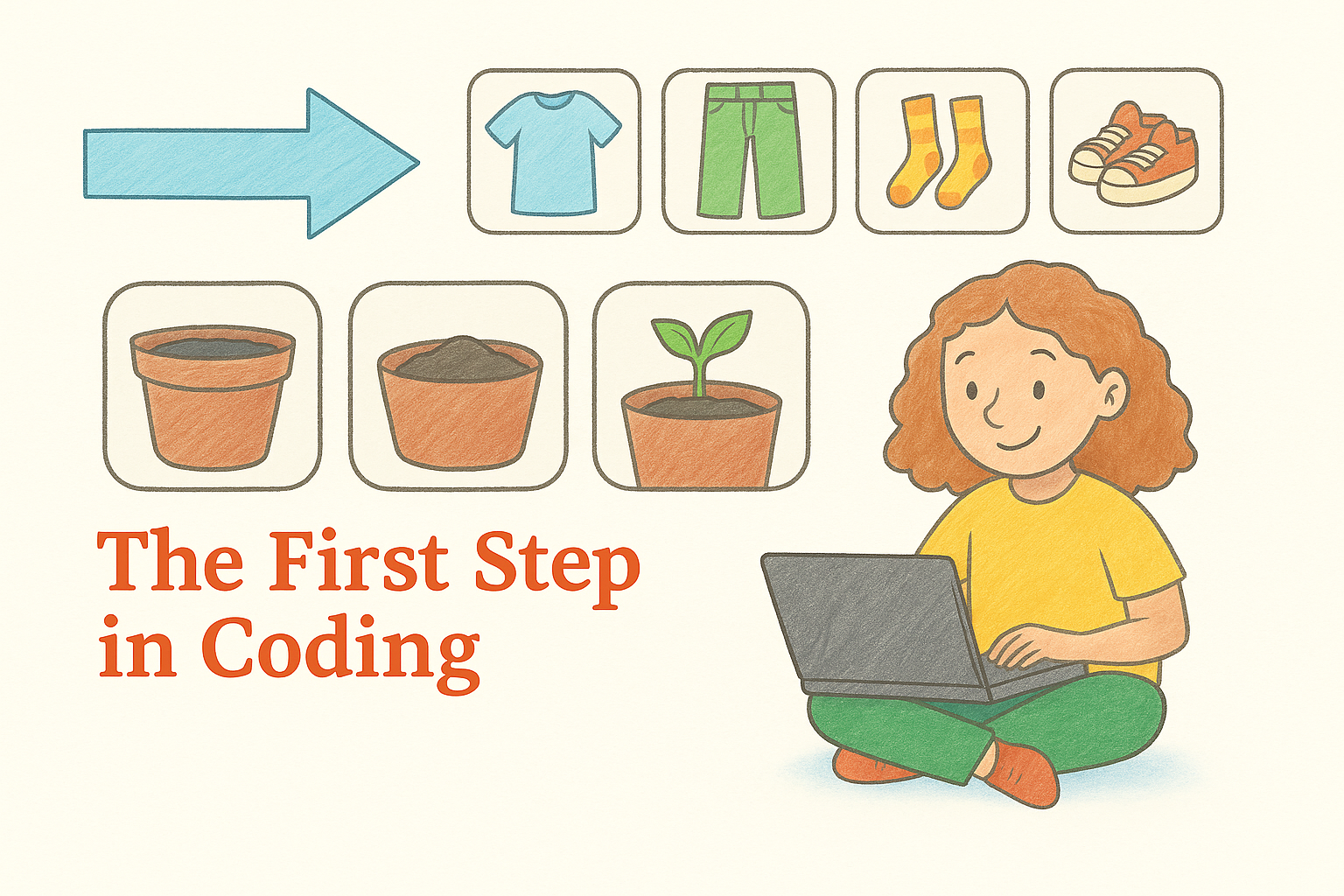Sequencing activities for kids are one of the best ways to introduce coding without screens. When you think about coding, the word “sequencing” might not be the first thing that comes to mind. But for kids just starting out, it’s the most important first step.
Sequencing means putting steps in the right order, and it’s something children already do every day. Whether they are brushing their teeth or packing their lunch, they are learning to follow routines in a sequence. That same skill makes it possible to write computer programs, follow instructions, and solve problems in a logical way.
If you are looking for screen-free ways to teach coding at home, sequencing activities for kids are the perfect place to begin.
What Is Sequencing?

Sequencing is the act of arranging steps in the correct order to complete a task. It is how we get dressed, make a sandwich, or tell a story from beginning to end.
In computer science, sequencing is essential. Computers follow instructions exactly as they are given, and the order always matters. If you tell a robot to “eat cereal” before “get a spoon,” things might not go as planned.
Helping young kids learn to think step by step builds the foundation for every coding concept that follows.
Why Sequencing Comes First in Coding
Before kids can build complex programs or understand coding ideas like conditionals and loops, they need to learn how to plan out a process.
This is why sequencing is the first concept we teach in our screen-free coding curriculum. We begin with routines children already know and turn them into playful learning opportunities.
When children understand that one action must happen before another, they start to see how computers work. Coding becomes something they already know how to do.
Simple Sequencing Activities for Kids
The best way to teach sequencing is through fun, hands-on experiences. Here are a few favorite sequencing activities for kids that do not require any screens:

- Step Card Mix-Up
Print or create cards that show each step of a daily routine like getting dressed. Mix them up and have your child place them in the correct order. - Story Sequencing
Cut up a familiar story into picture cards. Let your child arrange the pictures to retell the story in order. - Make a Snack
Ask your child to describe the steps for making a sandwich or pouring cereal. Then follow their directions exactly as given. - Act It Out
Create a simple obstacle course and have your child give you step-by-step directions to complete it. - Fix the Silly Sequence
Tell your child an out-of-order routine like “put on shoes, then socks.” Have them correct the sequence and explain why it makes more sense.
These activities build logic, language, and problem-solving skills while introducing the basics of coding in a natural and engaging way.
Try It Today: Free Step Card Printable
Ready to try sequencing right now? We created a free printable step card activity that helps kids practice putting steps in order.

This printable includes illustrated cards for a simple routine like plant a seed:
“Get a pot with soil,” “Plant the seed,” “Water the seed,”
Print the cards, cut them apart, and mix them up. Then ask your child to put them in order. You can also create your own routines like brushing teeth or packing a backpack with index cards.
Learn More About Sequencing in Coding
If you want to go even deeper into how sequencing works in computer science, check out this fun and informative post from Scratch Garden: Let’s Explore the Very Important Concept of Sequencing in Coding. It breaks down the concept in a playful, kid-friendly way and includes examples that help make this foundational skill easy to understand.
Final Thoughts
Teaching kids to sequence is more than just a preschool skill. It is the foundation of coding.
When children learn to put steps in the right order, they are building the logical thinking they will use throughout their learning. You do not need a screen or any special software. Just a little creativity and some time together.
Try one of these sequencing activities for kids this week. It is a simple way to build strong problem-solving skills one step at a time.


Leave a Reply